BSA delivers its bullpup at last but just how good is it?
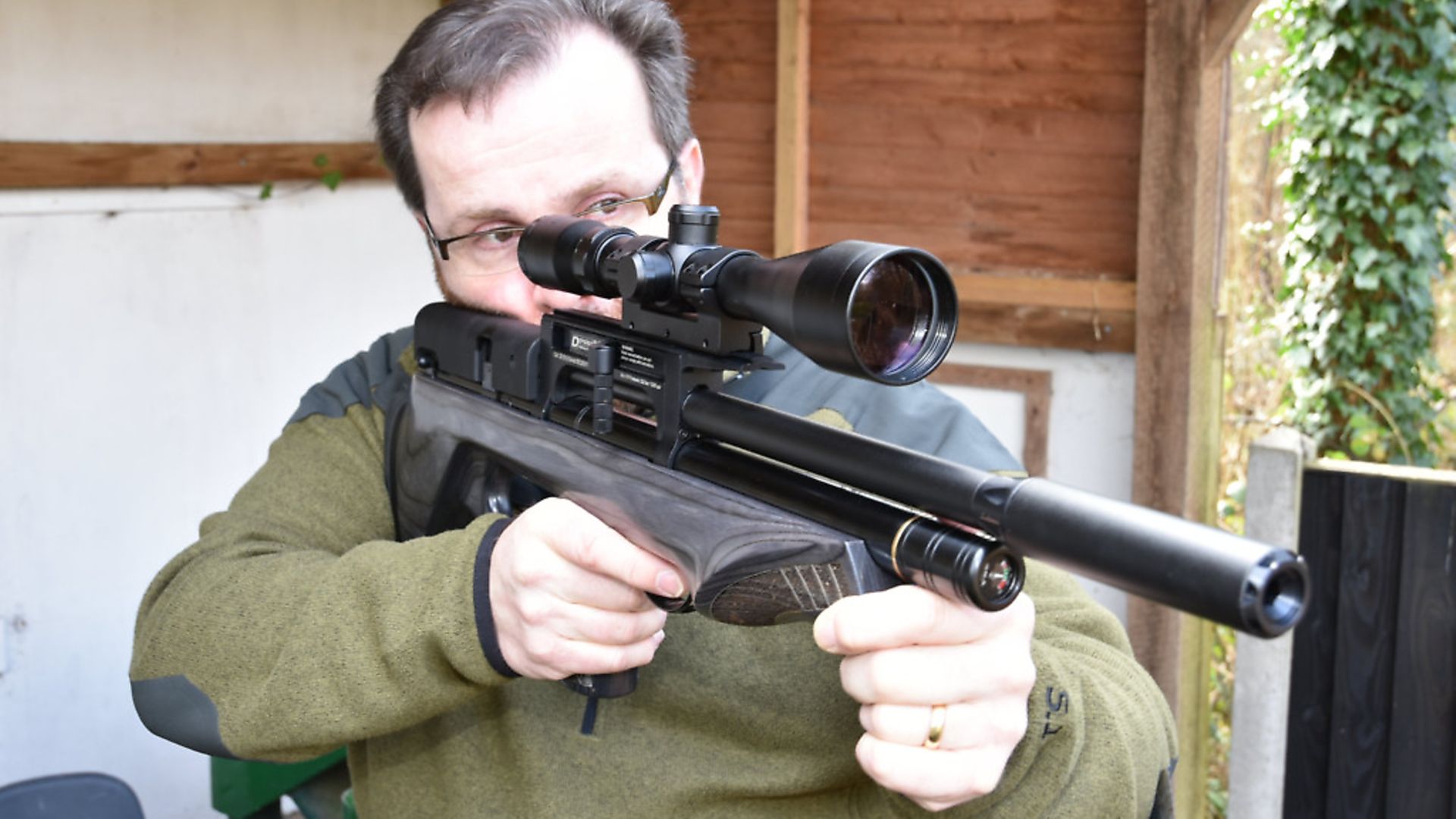 credit: Archant
credit: Archant
The chap who runs BSA is a straight talking kind of man who once told me that they’d never make a bullpup, but last year confided that in fact they planned to do just that. They’d had a good look around at what the competition had delivered and taken their time to design something special.
At the British Shooting Show in February, the Defiant you see in the photos was launched and now I’ve had some time shooting it to form an opinion, I’ll give you my view on this exciting new rifle. My first impression was that it really is a small gun, unlike some bullpups I’ve handled. It’s solidly built, yet hides the weight very well. Being so short, just 31”, it feels like it could deliver on the bullpup promise of being truly handy in confined spaces, such as hides or the cab of your 4x4.
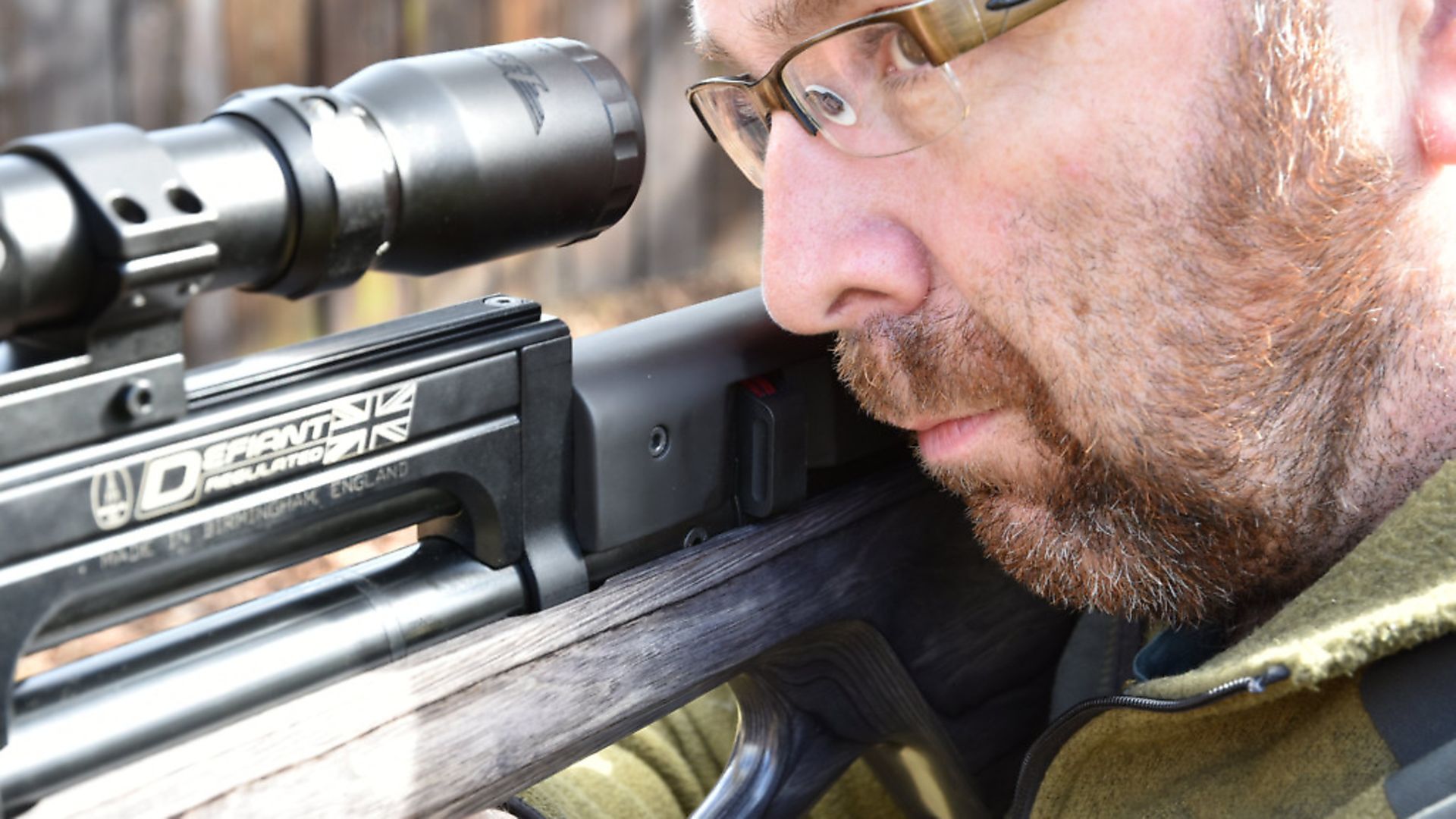 credit: Archant
credit: Archant
Good ergonomics
The action uses the standard 10-shot BSA magazine which is actuated by a well-positioned side-lever on the right of the action. It’s clear that the BSA designers paid attention to the ergonomics of the rifle because the lever is ideally placed to allow reloading without the need to take it from your shoulder. As the Defiant is clearly intended to be a hunting rifle, this kind of detail matters very much. The vertical element of the cocking lever is free to rotate so that it doesn’t turn in your fingers as the lever swings through its arc, making the process comfortable and secure.
BSA also decided to design the rifle with a regulator from day one, which offers great consistency from shot to shot. A bigger advantage than that is the fact that it allows the action to deliver 110 shots in .22 for every 232bar fill, despite the tiny size of the air reservoir. That really is a magic trick to get that many shots from such a tiny gun – 110 shots is a huge number for any hunting gun and BSA deserves some respect for this accomplishment.
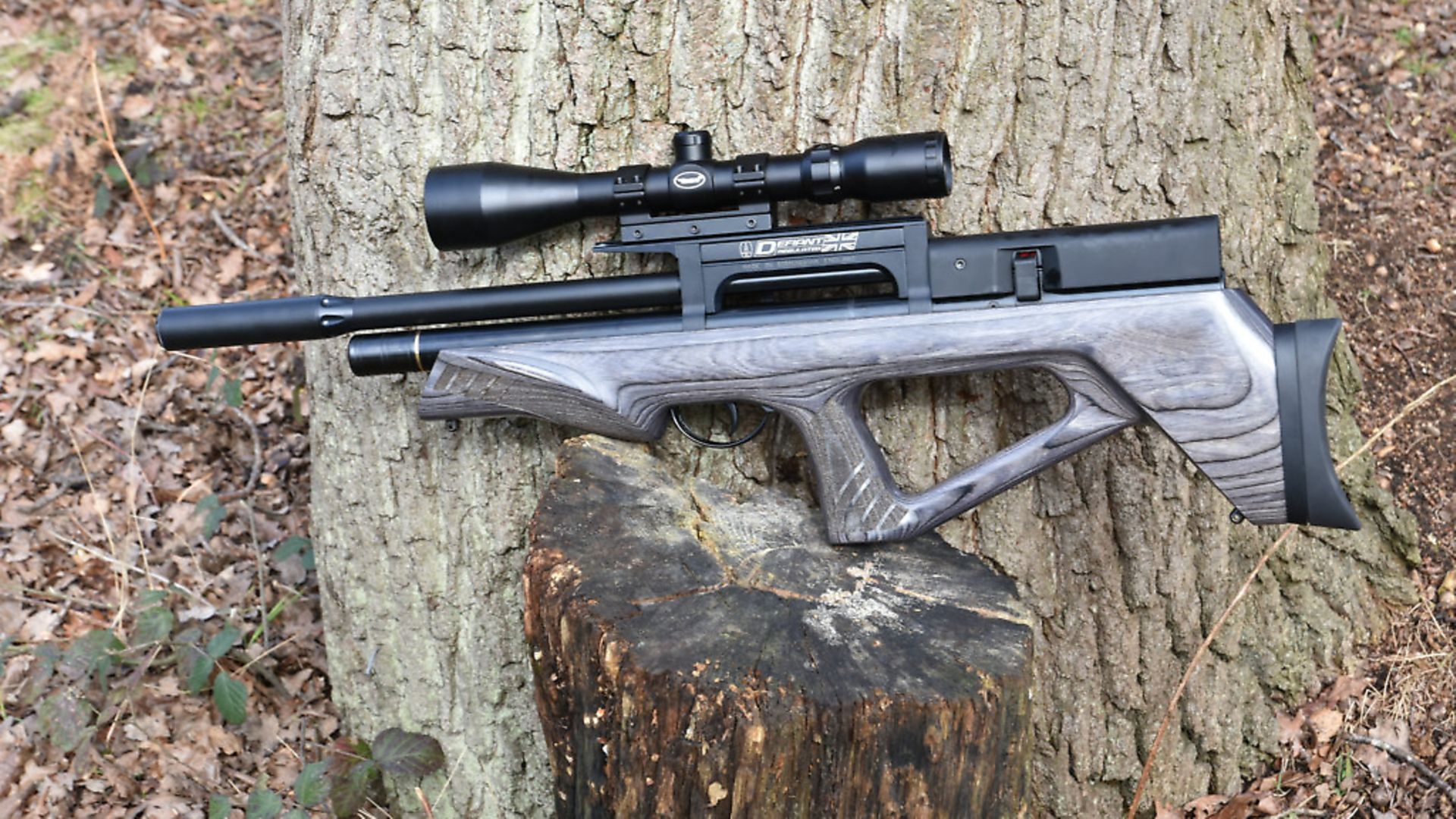 credit: Archant
credit: Archant
Great handling
A hunting rifle needs great handling and the ability to be shouldered and aimed very naturally, because when a shot at our quarry presents itself there’s no time for mucking around. You need to see, mount, aim and fire all in one smooth, seamless way that delivers efficiency and saves time. Because of this, I was very happy to see that BSA designed a cheek piece that supports the face well, but is not unnecessarily wide. Bulky cheek pieces force you to roll your head to the side and knock you off balance, which only works against accurate shooting. It’s covered in a black soft-touch kind of coating that will remain pleasant against your face even on a frosty, winter morning.
The scope is mounted on a raised rail that bridges the action and delivers the necessary amount of lift above the cheek piece so that you can get onto the scope quickly and easily. As with all bullpups, this places the scope high above the bore, so testing and practice will be needed to work out your hold and sight picture for those really close-range shots, such as when ratting. The guns seen at the British Shooting Show had a rather tall rail and after listening to feedback from the public who shot the rifle, BSA will be fitting a lower one on all 12 ft.lbs. models which suits me very well indeed. With it fitted, I found that my eye was immediately aligned with the scope’s axis.
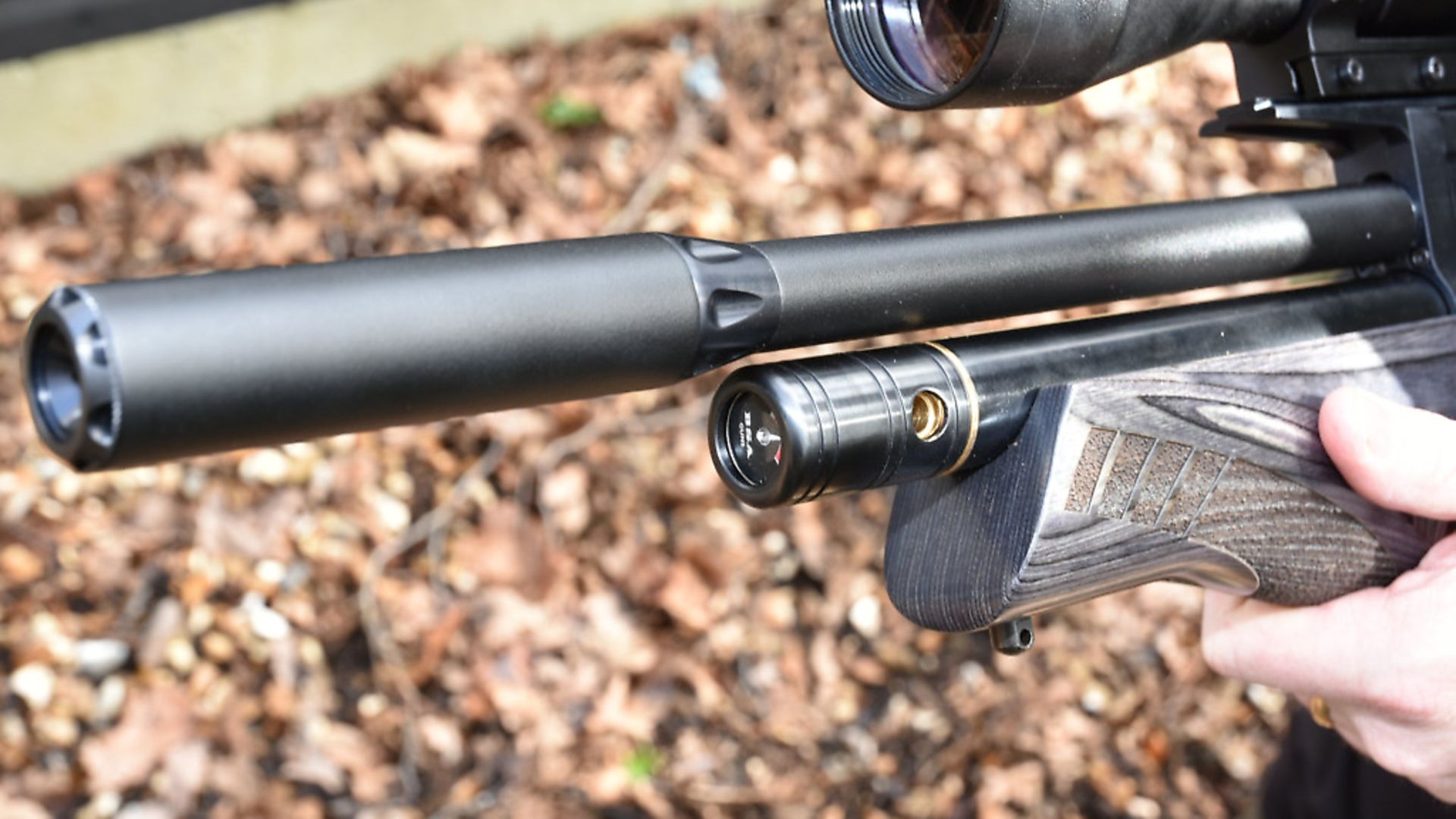 credit: Archant
credit: Archant
A difficult job
Designing a stock for a bullpup is much harder than for a conventional rifle, but BSA did a great job with this one. The near vertical pistol grip fills the hand well and delivers the index finger nicely to the blade, and the butt section is slim, allowing it to sit against your chest without interference. This all adds to the feeling of a wieldy sporting gun, rather than a target rifle. The vertically adjustable butt pad is a concave unit that’s made from quite sticky rubber, which is good and bad; bad because it sticks to your clothing as you try to mount the rifle, and good because once in place it adds support to your hold. That being said, this is one of the easiest bullpups to shoulder that I’ve ever handled.
Much of is this is because the balance point is forward of the trigger, just like a conventional rifle, although considerably less so. This makes the Defiant point naturally, as opposed to guns that have their balance toward the butt. With a little practice, I found that I could bring the sights quickly and naturally on aim without the need for too much readjustment to get the proper sight picture.
You can choose from three stock finishes; the lovely grey laminate you see in the pictures, which is far and away my favourite, traditional walnut and the ever-practical black soft touch. The fit and finish of my test gun’s stock was exceptional, delivering a luxurious feel, and laminated wood is also stable in extremes of weather. However, it’s hard to beat the soft touch for pure practicality in the field because it will shrug off mud, blood and rain with ease. The choice is yours.
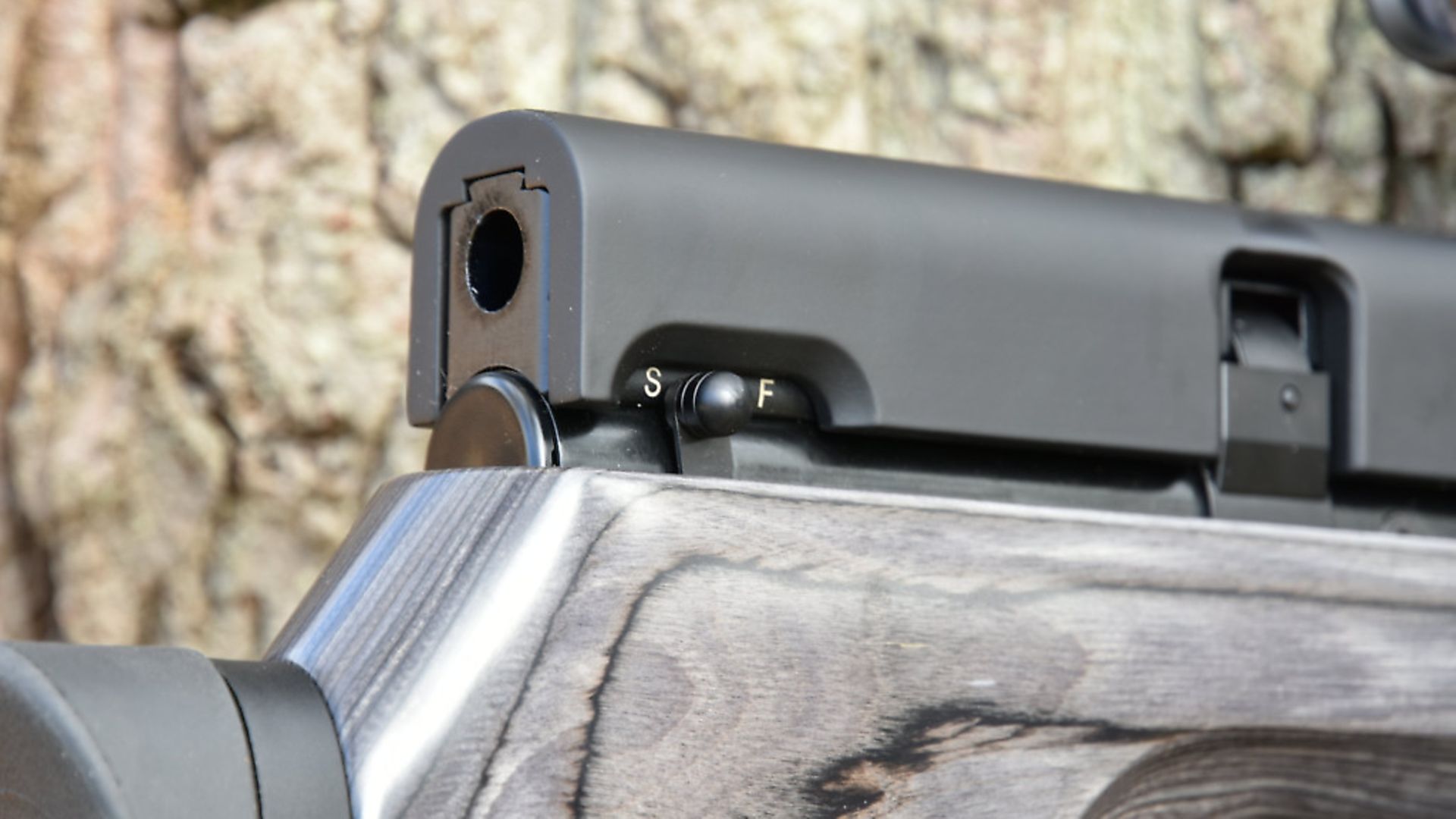 credit: Archant
credit: Archant
Trigger performance
One of the big challenges for any company hoping to make a top-class bullpup is making a good trigger. BSA worked hard on this and they succeeded where many have failed. Beneath the action a long rod connects the remote trigger assembly to the firing mechanism at the back of the action. With the use of sturdy materials and strong guides and supports, the Defiant’s trigger has plenty of feel and a crisp release. If you want to adjust it further, you need to remove the stock which then gives access to the adjustment screws. I know that sounds a hassle, but once you have it set you’ll leave it alone, so it’s no big deal in my book.
A useful side benefit of this set-up is that when the safety is engaged it blocks the first stage of the trigger pull. This means that you know it’s on, the very instant you touch the blade, and you don’t try to fire when it’s engaged. After years of my complaining about BSA safeties being on the left side of the action, the one fitted here is on the right. Hurray! It’s positioned as far back on the action as you can go, effectively under your ear if you’re right-handed, but I found it easy enough to use, even with the rifle shouldered. I also appreciated the fact that it’s silent in operation, so that you won’t spook your quarry with loud metallic clicks as you disengage it.
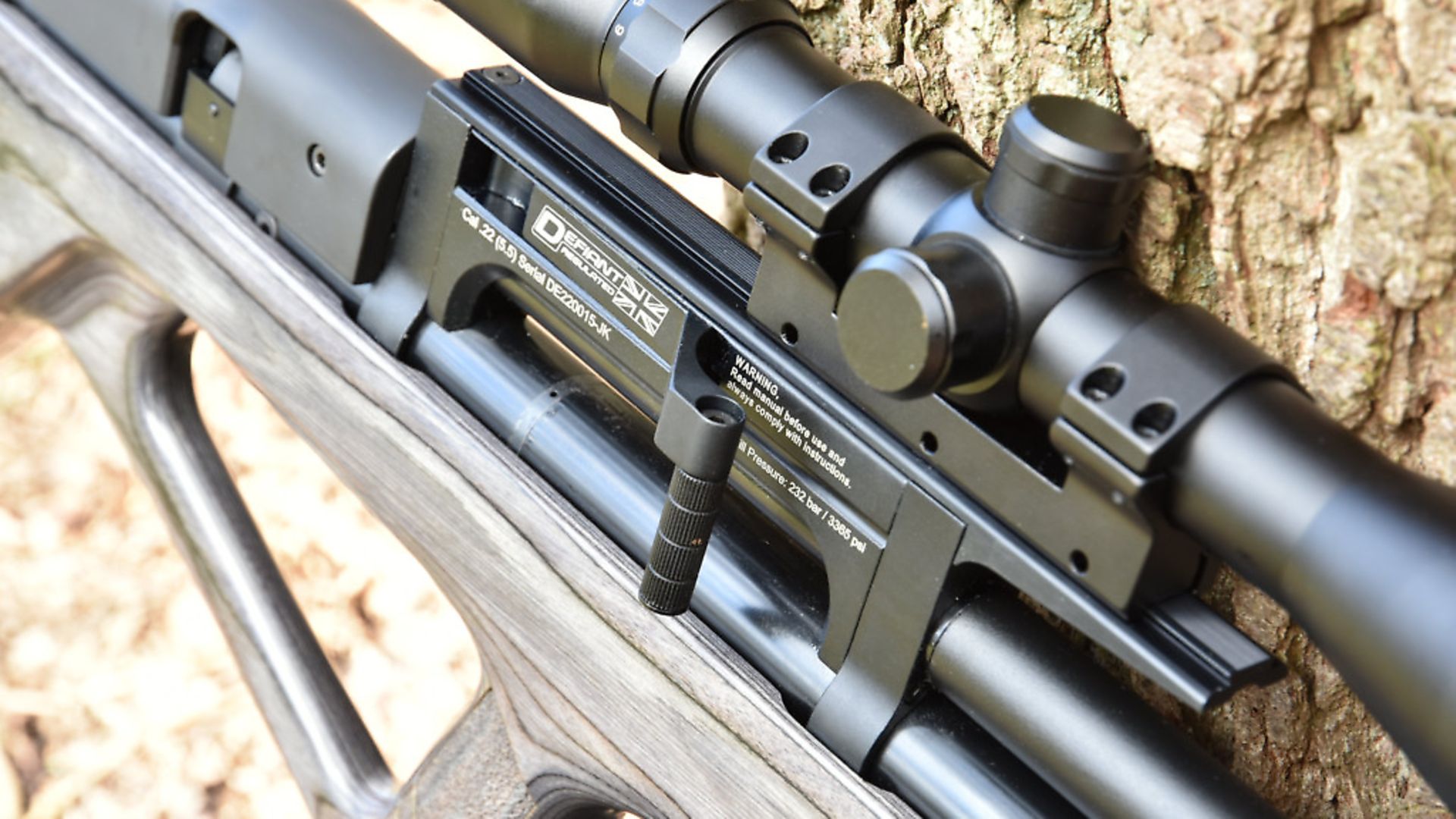 credit: Archant
credit: Archant
Mag’ placement
On the opposite side of the action is the port that accepts the 10-shot magazine. This is set low and forward so that it did not come into contact with my face, no matter which shooting position I chose. In a change from the usual installation method, the magazine is held in place by magnets rather then the sliding pin mechanism BSA has used for ages. I quite like this change because it means one less operation each time you load or unload and I found the magnets just as secure in the field. Unsurprisingly, the Defiant uses the latest generation of magazine which is one I know well and have complete faith in. As you load each chamber in turn, you wind the central cylinder against a spring that then unwinds as you shoot and aligns the next pellet. It’s quite a simple device which is a good thing. As with all magazines, keeping it clean and free from grit is important to reliable performance.
Of course the Defiant uses a cold hammer-forged barrel made in their factory in Birmingham and these have a well deserved reputation for quality and accuracy. Wrapped around this is an aluminium shroud which adds to the chunky look, and at the muzzle we find a shortened model of their VC (variable choke) silencer. I can well see why they used a small version because it complements the compact dimensions. Why stick a long moderator on a rifle designed for use in tight spaces? Below this we find the pressure gauge which is on the front of the air reservoir and behind that is a rotary collar that keeps the air filling port clean, vital for the long-term survival in the rifle’s delicate internal mechanism.
Power and consistency
Over the chronograph my .22 test rifle varied just 5fps over a 50-shot string, just as I’d hoped a regulated rifle would deliver. This was with pellets straight from the tin with no washing or sorting, but the Air Arms Field Diablo is such an excellent pellet I know I can trust it. Average velocity was 564fps for a well set 11.2ft.lbs, safely on the right side of the 12ft.lbs. limit. Power and consistency were a given, but what I cared about was how the rifle shot, so a long test session was needed. After quickly zeroing, I was soon getting one-hole groups at 30 yards and starting to get a feel for the rifle. It has that tall, top-heavy feel that all bullpups have when shot off bags, but that was much less noticeable standing or kneeling. I think that the sticky concave rubber butt pad and top-class ergonomics were showing their worth. Better still, having proper contact between my face and the cheek piece helped to lock me in. I was even able to get comfortable shooting prone, something not many bullpups have offered me.
A few people have commented to me that BSA is a bit late to the party with its take on bullpup design, but perhaps there’s a good reason for that. I suspect they’ve had a good long look at all the other designs out there and then done things their own way. This is a very ‘well thought through’ rifle that has no faults that I’ve found in my time with it. It truly delivers on the promise of a really compact rifle that gives out the big gun performance that hunters demand and I feel very confident that BSA has a real winner on its hands.
Specification
Manufacturer: BSA Guns
Model: Defiant
Type: Pre-charged pneumatic
Action: 10-shot side-lever
Trigger: Two-stage adjustable
Length: 31” (78.8cm)
Weight: 9.5lbs (4.3kg)
Fill pressure: 232bar
Shots per fill: 110 in .22
RRP: Walnut & Black Soft Touch £1049/Black Pepper £1099/Spare magazine £46.20
__________________________________________________
See more tests of the BSA guns...
BSA Guns Ultra SE Cayenne
BSA Mercury S: The best beeza ever?
BSA Spitfire SF